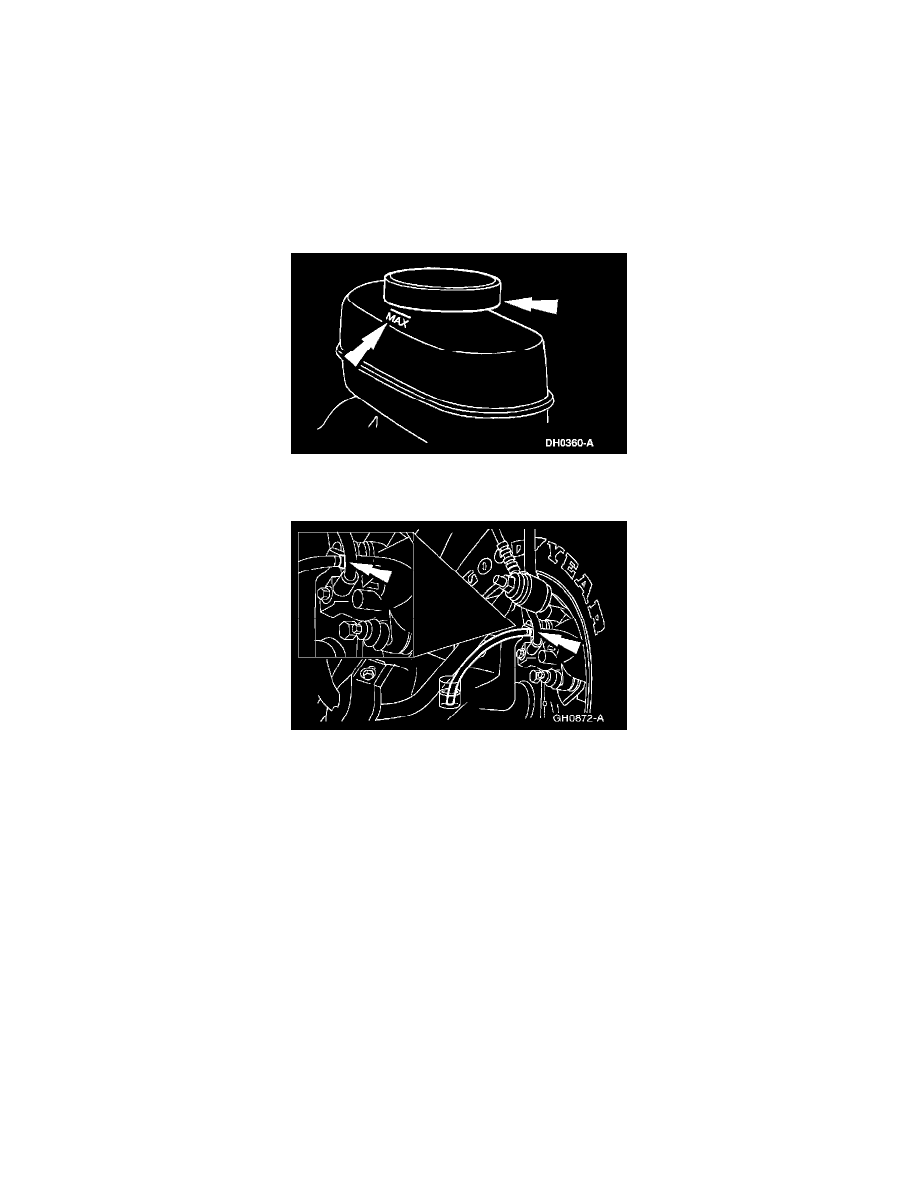Crown Victoria V8-4.6L SOHC VIN W (2005)

CAUTION: Brake fluid is harmful to painted and plastic surfaces. If brake fluid is spilled onto a painted or plastic surface, immediately wash it with
water.
NOTE: Pressure bleeding the brake system at 207-345 kPa (30-50 psi) is preferred to manual bleeding.
NOTE: When any part of the hydraulic system has been disconnected for repair or installation of new components, air can get into the system and
cause spongy brake pedal action. This requires bleeding of the hydraulic system, including the hydraulic control unit (HCU) after it has been correctly
connected.
NOTE: If the HCU or any component upstream of the HCU are installed new, carry out the brake system bleed procedure first without the diagnostic
tool, followed by the brake system bleed procedure using the diagnostic tool.
1. Clean all dirt from and remove the brake master cylinder filler cap and fill the brake master cylinder reservoir with DOT 3 motor vehicle brake
fluid.
2. NOTE: For ABS only vehicles, open the master cylinder bleed screw until clear, bubble-free fluid flows from the tube into the cup.
NOTE: Bleed the brake system from the longest to the shortest brake line.
Place a box end wrench on the bleeder screw. Attach a rubber drain tube to the bleeder screw and submerge the free end of the tube in a container
partially filled with DOT 3 motor vehicle brake fluid.
3. Have an assistant hold firm pressure on the brake pedal.
4. Loosen the bleeder screw until a stream of brake fluid comes out. While the assistant maintains pressure on the brake pedal, tighten the bleeder
screw and release the pedal pressure.
^
Release the brake pedal.
^
Repeat 3 times or until clear, bubble-free fluid comes out.
^
Refill the brake master cylinder reservoir as necessary.
